Donor human milk for preventing necrotising enterocolitis in very preterm or very low-birthweight infants
- PMID: 39239939
- PMCID: PMC11378496
- DOI: 10.1002/14651858.CD002971.pub6
Donor human milk for preventing necrotising enterocolitis in very preterm or very low-birthweight infants
Abstract
Background: When sufficient maternal milk is not available, donor human milk or formula are the alternative forms of enteral nutrition for very preterm or very low-birthweight (VLBW) infants. Donor human milk may retain the non-nutritive benefits of maternal milk and has been proposed as a strategy to reduce the risk of necrotising enterocolitis (NEC) and associated mortality and morbidity in very preterm or VLBW infants.
Objectives: To assess the effectiveness of donor human milk compared with formula for preventing NEC and associated morbidity and mortality in very preterm or VLBW infants when sufficient maternal milk is not available.
Search methods: We searched the Cochrane Central Register of Controlled Trials (CENTRAL), MEDLINE, Embase, the Maternity and Infant Care (MIC) database, and the Cumulative Index to Nursing and Allied Health Literature (CINAHL), from the earliest records to February 2024. We searched clinical trials registries and examined the reference lists of included studies.
Selection criteria: Randomised or quasi-randomised controlled trials comparing feeding with donor human milk versus formula in very preterm (< 32 weeks' gestation) or VLBW (< 1500 g) infants.
Data collection and analysis: Two review authors evaluated the risk of bias in the trials, extracted data, and synthesised effect estimates using risk ratio, risk difference, and mean difference, with associated 95% confidence intervals. The primary outcomes were NEC, late-onset invasive infection, and all-cause mortality before hospital discharge. The secondary outcomes were growth parameters and neurodevelopment. We used the GRADE approach to assess the certainty of the evidence for our primary outcomes.
Main results: Twelve trials with a total of 2296 infants fulfilled the inclusion criteria. Most trials were small (average sample size was 191 infants). All trials were performed in neonatal units in Europe or North America. Five trials were conducted more than 40 years ago; the remaining seven trials were conducted in the year 2000 or later. Some trials had methodological weaknesses, including concerns regarding masking of investigators and selective reporting. Meta-analysis showed that donor human milk reduces the risk of NEC (risk ratio (RR) 0.53, 95% confidence interval (CI) 0.37 to 0.76; I² = 4%; risk difference (RD) -0.03, 95% CI -0.05 to -0.01; 11 trials, 2261 infants; high certainty evidence). Donor human milk probably has little or no effect on late-onset invasive infection (RR 1.12, 0.95 to 1.31; I² = 27%; RD 0.03, 95% CI -0.01 to -0.07; 7 trials, 1611 infants; moderate certainty evidence) or all-cause mortality (RR 1.00, 95% CI 0.76 to 1.31; I² = 0%; RD -0.00, 95% CI -0.02 to 0.02; 9 trials, 2116 infants; moderate certainty evidence).
Authors' conclusions: The evidence shows that donor human milk reduces the risk of NEC by about half in very preterm or VLBW infants. There is probably little or no effect on late-onset invasive infection or all-cause mortality before hospital discharge.
Trial registration: ClinicalTrials.gov NCT00506584 NCT01686477 NCT01232725 NCT01390753.
Copyright © 2024 The Cochrane Collaboration. Published by John Wiley & Sons, Ltd.
Conflict of interest statement
MQ was a deputy Co‐ordinating Editor for Cochrane Common Mental Disorders; she did not participate in the acceptance or editorial processes for this review.
NDE declares research grants paid to his employer for a trial using commercially prepared, human milk derived products from Prolacta Bioscience, 2017; a grant from Danone Early Life Nutrition for a study on feeding in late and moderately preterm infants, 2018; and a grant for a trial of human milk‐derived fortifier from NeoKare, 2022. NDE declares lecture honoraria from Nestle Nutrition Institute donated to charity in 2021 and 2023. NDE declares no financial relationships or benefits. NDE is a member of the UK Association for Milk Banking.
NM has nothing to declare.
WM is a Co‐ordinating Editor for Cochrane Neonatal; he did not participate in the acceptance or editorial processes for this review.
Figures






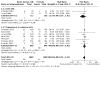
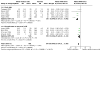
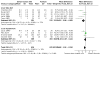

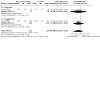
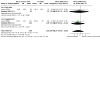
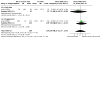
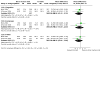


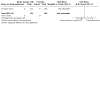

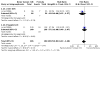
Update of
-
Formula versus donor breast milk for feeding preterm or low birth weight infants.Cochrane Database Syst Rev. 2019 Jul 19;7(7):CD002971. doi: 10.1002/14651858.CD002971.pub5. Cochrane Database Syst Rev. 2019. Update in: Cochrane Database Syst Rev. 2024 Sep 6;9:CD002971. doi: 10.1002/14651858.CD002971.pub6. PMID: 31322731 Free PMC article. Updated.
References
References to studies included in this review
Corpeleijn 2016 {published data only}
-
- Corpeleijn WE, De Waard M, Christmann V, Van Goudoever JB, Jansen-van der Weide MC, Kooi EM, et al. Effect of donor milk on severe infections and mortality in very low-birth-weight Infants: the early nutrition study randomized clinical trial. JAMA Pediatrics 2016;170(7):654-61. [DOI: 10.1001/jamapediatrics.2016.0183] [PMID: ] - DOI - PubMed
Costa 2018 {published data only}
Cristofalo 2013 {published data only}
Davies 1977 {published data only}
Gross 1983 {published data only}
Lucas 1984a {published data only}
Lucas 1984b {published data only}
MILK 2024 {published data only}NCT01534481
Mills 2024 {published and unpublished data}
-
- Mills L, Chappell KE, Emsley R, Alavi A, Andrzejewska I, Santhakumaran S, et al. Preterm formula, fortified or unfortified human milk for very preterm infants, the PREMFOOD Study: A parallel randomised feasibility trial. Neonatology 2024;121(2):222-232. [DOI: 10.1159/000535498] [PMID: ] - DOI - PMC - PubMed
-
- NCT01686477. Preterm formula or donor breast milk for premature babies [Preterm formula or donor breast milk to make up any shortfall in mother's own milk]. clinicaltrials.gov/study/NCT01686477 (first received 18 September 2012). [CENTRAL: CN-01537635]
O'Connor 2016 {published data only}
-
- O'Connor DL, Gibbins S, Kiss A, Bando N, Brennan-Donnan J, Ng E, et al, GTA DoMINO Feeding Group. Effect of supplemental donor human milk compared with preterm formula on neurodevelopment of very low-birth-weight infants at 18 months: a randomized clinical trial. JAMA 2016;316(18):1897-905. [DOI: 10.1001/jama.2016.16144] [PMID: ] - DOI - PubMed
Schanler 2005 {published data only}
Tyson 1983 {published data only}
-
- Tyson JE, Lasky RE, Mize CE, Richards CJ, Blair-Smith N, Whyte R, et al. Growth, metabolic response, and development in very-low-birth-weight infants fed banked human milk or enriched formula. I. Neonatal findings. Journal of Pediatrics 1983;103(1):95-104. [DOI: 10.1016/s0022-3476(83)80790-2] [PMID: ] - DOI - PubMed
References to studies excluded from this review
Brandstetter 2018 {published data only}
Castellano 2019 {published data only}
-
- Castellano Yanez C, Castillo Barrio B, Munoz Labian MD, Ortiz Movilla R, Garcia Lara NR, Royuela Vicente A, et al. Providing very preterm infants with donor human milk led to faster breastfeeding rates but worse biometric gains. Acta Paediatrica 2019;108(4):766-7. [DOI: 10.1111/apa.14691] [PMID: ] - DOI - PubMed
Colaizy 2015 {published data only}
Cooper 1984 {published data only}
Hair 2014 {published data only}
-
- Hair AB, Blanco CL, Moreira AG, Hawthorne KM, Lee ML, Rechtman DJ, et al. Randomized trial of human milk cream as a supplement to standard fortification of an exclusive human milk-based diet in infants 750-1250 g birth weight. Journal of Pediatrics 2014;165(5):915-20. [DOI: 10.1016/j.jpeds.2014.07.005] [PMID: ] - DOI - PubMed
Jarvenpaa 1983 {published data only}
-
- Jarvenpaa AL, Raiha NC, Rassin DK, Gaull GE. Feeding the low-birth-weight infant: I. Taurine and cholesterol supplementation of formula does not affect growth and metabolism. Pediatrics 1983;71(2):171-8. [PMID: ] - PubMed
Marseglia 2015 {published data only}
Narayanan 1982 {published data only}
O'Connor 2003 {published data only}
-
- O'Connor DL, Jacobs J, Hall R, Adamkin D, Auestad N, Castillo M, et al. Growth and development of premature infants fed predominantly human milk, predominantly premature infant formula, or a combination of human milk and premature formula. Journal of Pediatric Gastroenterology and Nutrition 2003;37(4):437-46. [DOI: 10.1097/00005176-200310000-00008] [PMID: ] - DOI - PubMed
Perez 2015 {published data only}
-
- Calderón Pérez, ML. Effects of feeding with pasteurized human milk compared to standard premature formula in infants less than 2,500 grams [Efectos de la alimentación con leche humana pasteurizada comparada con fórmula para prematuro estándar en recién nacidos menores de 2,500 gramos] [Master's thesis]. San Carlos, Guatemala: University of San Carlos, 2015. [http://www.repositorio.usac.edu.gt/1907/]
Perrella 2015 {published data only}
-
- Perrella SL, Hepworth AR, Gridneva Z, Simmer KN, Hartmann PE, Geddes DT. Gastric emptying and curding of pasteurized donor human milk and mother's own milk in preterm infants. Journal of Pediatric Gastroenterology and Nutrition 2015;61(1):125-9. [DOI: 10.1097/MPG.0000000000000776] [PMID: ] - DOI - PubMed
Putet 1984 {published data only}
Raiha 1976 {published data only}
-
- Raiha NC, Heinonen K, Rassin DK, Gaull GE. Milk protein quantity and quality in low-birthweight infants: I. Metabolic responses and effects on growth. Pediatrics 1976;57(5):659-84. [PMID: ] - PubMed
-
- Rassin DK, Gaull GE, Heinonen K, Raiha NC. Milk protein quantity and quality in low-birth-weight infants: II. Effects on selected aliphatic amino acids in plasma and urine. Pediatrics 1977;59(3):407-22. [PMID: ] - PubMed
Schultz 1980 {published data only}
Sullivan 2010 {published data only}
-
- Sullivan S, Schanler RJ, Kim JH, Patel AL, Trawoger R, Kiechl-Kohlendorfer U, et al. An exclusively human milk-based diet is associated with a lower rate of necrotizing enterocolitis than a diet of human milk and bovine milk-based products. Journal of Pediatrics 2010;156(4):562-7. [DOI: 10.1016/j.jpeds.2009.10.040] [PMID: ] - DOI - PubMed
Svenningsen 1982 {published data only}
Tewari 2018 {published data only}
-
- Tewari VV, Dubey SK, Kumar R, Vardhan S, Sreedhar CM, Gupta G. Early versus late enteral feeding in preterm intrauterine growth restricted neonates with antenatal Doppler abnormalities: an open-label randomized trial. Journal of Tropical Pediatrics 2018;64(1):4-14. [DOI: 10.1093/tropej/fmx018] [PMID: ] - DOI - PubMed
References to ongoing studies
NCT01232725 {published data only}
-
- NCT01232725. Donor human milk and neurodevelopmental outcomes in very low birthweight (VLBW) infants [Clinical epidemiologic and biologic studies of donor human milk and breastfeeding]. clinicaltrials.gov/study/NCT01232725 (first received 02 November 2010). [CENTRAL: CN-01501660]
NCT01390753 {published data only}
-
- NCT01390753. Role of human milk bank in the protection of severe respiratory disease in very low birth weight premature infants [Preventing respiratory disease hospitalizations in premature infants fed donor human milk]. clinicaltrials.gov/study/NCT01390753 (first received 11 July 2011). [CENTRAL: CN-01487464]
Additional references
Abrams 2017
-
- Abrams SA, Landers S, Noble LM, Poindexter BB. Donor human milk for the high-risk infant: preparation, safety, and usage options in the United States. Pediatrics 2017;139:1. - PubMed
Altobelli 2020
Amiel‐Tison 1986
-
- Amiel-Tison C, Grenier A. Neurological Assessment During the First Year of Life. New York and Oxford: Oxford University Press, 1986.
Battersby 2018
Berrington 2012
Borenstein 2013
Brown 2019
Brown 2020
Buckle 2017
Cleminson 2015
Colaizy 2021
Covidence [Computer program]
-
- Covidence. Version accessed 7 February 2024. Melbourne, Australia: Veritas Health Innovation, 2024. Available at covidence.org.
Egger 1997
Ellis 2019
Embleton 2017
Fewtrell 1999
-
- Fewtrell M, Lucas A. Nutritional physiology: dietary requirements of term and preterm infants. In: Rennie JM, Roberton NR, editors(s). Textbook of Neonatology. 3rd edition. Edinburgh: Churchill Livingstone, 1999:305-25.
Gale 2020
Gates 2023
GRADEpro GDT [Computer program]
-
- GRADEpro GDT. Version accessed 15 March 2023. Hamilton (ON): McMaster University (developed by Evidence Prime), 2023. Available at gradepro.org.
Harbord 2006
Hay 1994
Hickey 2018
Higgins 2011
-
- Higgins JP, Altman DG, Sterne JA, editor(s). Chapter 8: Assessing risk of bias in included studies. In: Higgins JP, Churchill R, Chandler J, Cumpston MS, editor(s). Cochrane Handbook for Systematic Reviews of Interventions Version 5.1.0 (updated March 2011). The Cochrane Collaboration, 2011. Available from training.cochrane.org/handbook/archive/v5.1/.
Higgins 2020
-
- Higgins JP, Thomas J, Chandler J, Cumpston M, Li T, Page MJ, et al, editor(s) . Cochrane Handbook for Systematic Reviews of Interventions Version 6.1 (updated September 2020). Cochrane, 2020. Available from training.cochrane.org/handbook/archive/v6.1.
Horbar 2012
Isaacs 2009
Jaworski 2022
Klingenberg 2012
Meek 2022
Pammi 2020
Peila 2016
RevMan 2024 [Computer program]
-
- Review Manager (RevMan). Version 7.2.0. The Cochrane Collaboration, 2024. Available at revman.cochrane.org.
Samuels 2017
Schanler 1995
-
- Schanler RJ. Suitability of human milk for the low-birthweight infant. Clinics in Perinatology 1995;22(1):207-22. [PMID: ] - PubMed
Schünemann 2013
-
- Schünemann H, Brożek J, Guyatt G, Oxman A, editor(s). Handbook for grading the quality of evidence and the strength of recommendations using the GRADE approach (updated October 2013). GRADE Working Group, 2013. Available from gdt.guidelinedevelopment.org/app/handbook/handbook.html.
Sharif 2023
Shenker 2023
Taylor 2018
Tsang 1993
-
- Tsang RC, Lucas A, Uauy R, Zlotkin S. Nutritional Needs of the Newborn Infant: Scientific Basis and Practical Guidelines. Pawling (NY): Caduceus Medical Publishers, 1993.
Tudehope 2012
VON 2021
-
- Vermont Oxford Network. Manual of Operations. Data Definitions & Infant Data Booklets. vtoxford.zendesk.com/hc/en-us/articles/360056768093-2021-Manual-of-Opera....
Walsh 2019
Walsh 2021
WHO 2023
-
- World Health Organization. Donor human milk for low-birth-weight infants. e-Library of Evidence for Nutrition Actions (eLENA). www.who.int/tools/elena/interventions/donormilk-infants (accessed 25 December 2023).
Young 2020
References to other published versions of this review
Henderson 2001
Quigley 2007
Quigley 2014
Quigley 2018
Publication types
MeSH terms
Associated data
LinkOut - more resources
Full Text Sources
Medical
Miscellaneous

